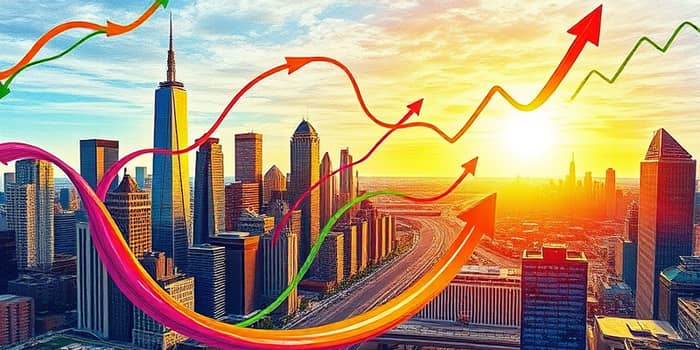
In an era of rapid change and uncertainty, the ability to anticipate the next phase of the economy can transform strategy into success and risk into opportunity. Leading indicators offer a window into the future, helping decision-makers chart a confident course.
Leading indicators are data series that shift anticipate key business cycle shifts before the broader economy follows suit. By signaling peaks and troughs ahead of time, these indicators empower analysts, investors, businesses, and policymakers to make proactive and informed policy decisions rather than react after the fact.
As markers of future activity, leading indicators include metrics like new orders for capital goods, consumer sentiment surveys, and yield curve changes. Their predictive value lies in the fact that firms and households adjust behavior in advance—ordering equipment, seeking loans, or tightening budgets—based on evolving conditions.
The business cycle unfolds in expansions and contractions, each culminating in peaks (just before downturns) and troughs (just before recoveries). Missing a turning point can carry significant costs:
By closely tracking leading indicators, organizations can align investments with the cycle, adjusting production, staffing, and financing to the expected trajectory of growth or decline.
Economists categorize indicators into three groups based on timing relative to the cycle:
While coincident and lagging indicators validate the state of the economy, it is the leading metrics that offer foresight and first-mover advantages.
The Conference Board’s Leading Economic Index (LEI) for the U.S. aggregates ten components into a composite signal. Its most powerful elements include:
Beyond the LEI, other useful gauges are consumer confidence surveys, money supply trends (M2 growth), and corporate new orders. Individually, they carry noise; collectively, they paint a robust picture of where the economy is heading.
To harness the predictive power of multiple indicators, economists construct composite leading indicator systems. These indices:
By applying smoothing techniques and consistent weighting, composite indices reduce the risk of false alarms while preserving the early warning signals vital for strategy.
No forecasting tool is flawless. Leading indicators can present drawbacks such as:
Premature or false signals when exogenous shocks distort data. For example, sudden policy shifts or geopolitical events can trigger abrupt changes unrelated to underlying economic strength.
Component sensitivity to speculative financial movements, which may give undue weight to short-lived market trends rather than genuine activity.
Varying lead times across cycles and countries, meaning models must be adapted to each national context and continually recalibrated.
Nevertheless, by combining multiple indicators and regularly reviewing their performance, analysts can reduce the risk of false positives and maintain a reliable early-warning framework.
International institutions also leverage leading indicators. The OECD publishes Composite Leading Indicators (CLIs) covering dozens of economies, highlighting cyclical deviations from long-term trends. Similarly, the Conference Board tracks LEIs for major markets beyond the U.S., and national statistical offices (like the UK’s ONS) release real-time indicators tailored to local cycles.
Cross-country comparisons help investors diversify risk, while governments adjust fiscal and monetary policy in anticipation of global headwinds or tailwinds.
Effective communication of indicator signals involves clear charts and annotations. Common techniques include:
— Shaded recession bands overlaid on real GDP graphs
— Overlaying leading, coincident, and lagging series to show their relative timing
— Highlighting index inflection points with markers and trendlines
Such visual tools transform raw data into compelling stories that drive stakeholder alignment and decisive action.
Historical episodes demonstrate the power of leading indicators to disclose pivotal economic shifts:
Each case underscores the value of monitoring multiple indicators to secure early insights and minimize economic pain.
Forecasting economic turning points is both an art and a science. By harnessing leading indicators—rooted in real-time behavior changes—businesses can optimize inventory, investors can reposition portfolios, and policymakers can calibrate interventions.
While no indicator is infallible, the disciplined use of composite leading indicator systems and continuous review offers the best chance to stay ahead of the curve. In today’s interconnected global economy, the foresight gained from these tools can mean the difference between stagnation and growth, crisis and opportunity.
Embrace leading indicators not just as abstract data points, but as your early-warning system for navigating the shifting tides of the economic cycle.
References













